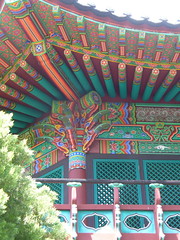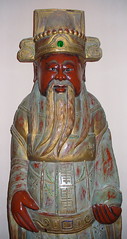The recent victory of the Democratic Party of Japan (DPJ) in the Lower House, just two years after its surprise victory in the Upper House, is only slightly less exciting than the news that the new First Lady of Japan has traveled, in an out-of-body experience, to the planet Venus. This unusual turn of affairs, predicted by authors such as Edgar Rice Burroughs, H. P. Lovecraft, Robert Heinlein, C. S. Lewis, Frederick Pohl, Isaac Asimov, and Paul Anderson, will not, we can only hope, influence Japan’s foreign affairs in the years ahead. Critics allege that Hatoyama Miyuki’s claim is nothing more than a stunt in which she hopes to attain the high-standing of American political wives like Nancy Reagan, who of course is a devout believer in Astrology, or even former president Jimmy Carter, who saw a UFO while Governor of Georgia (pdf). At the very least she is as “interesting” a figure in politics as Carla Bruni or Sarah Palin. And we shouldn’t let her oddities distract us from the very real and significant participation of women politicians in the DPJ strategy of attacking LDP strongholds. In the end, 54 women won seats in the Lower House.
The DPJ emerged from the late-night 1998 union, no doubt fueled by many Suntory whiskies, of the Democratic Reform Party, the New Fraternity Party, the Democratic Party, and the Good Governance Party. (Why didn’t they go with the much more compelling English name “The Good Fraternity Party”? Now that’s a name American politicians could understand.)
The leader of the DPJ in its period of frenetic activity between 2006 and May of 2009 was Ozawa Ichiro. Elected to the presidency of his party as a reformer, Ozawa was in fact first elected to office as a member of the LDP in 1969. His mentor was Tanaka Kakuei, who became Prime Minister in 1972 on a wave of overwhelming popularity but then was implicated in numerous scandals within a year of taking office. Ozawa survived this crisis and became LDP Secretary General in 1989. As recently as 1999, he was still closely aligned with the leaders of the LDP. This experience proved valuable. More than any member of the DPJ, Ozawa can be credited with the party’s rise, and although he stepped down in May because of allegations of scandal (surprise!), he was a central figure in the election strategy that knocked the LDP out of power for just the second time since the 50s, and will likely assume the new post of Secretary General.
The current leader of the DPJ and the new Prime Minister of Japan (as well as the lucky husband of one of the few women to visit Venus. Venus! Imagine!) is Hatoyama Yukio. Following in the proud, reformist tradition established by Koizumi Jun’ichiro, Hatoyama has awesome hair. Like many graduates of Stanford University (Ph.D. 1976), Hatoyama comes from humble origins: his great-grandfather was Speaker of the House and President of Waseda University; his grandfather was Prime Minister; his father was Foreign Minister; and his mother is considered to be one of the most influential political donors in Japan. (The family even has an English-language scholarly monograph dedicated to them; it’s available on KINDLE!) Hatoyama was only with the LDP for seven years from 1986 to 1993, giving him slightly better credentials as a reformist than Ozawa.
The DPJ has a lot to do. Their new Prime Minister, nicknamed “the Alien” by parliamentary colleagues for his protruding eyes and Stanford-like behavior, needs to answer the question: If women are from Venus, are men in fact from Mars? Will the DPJ adopt an increasingly belligerent tone toward North Korea, Japan’s most urgent international threat? Will Hatoyama champion environmental issues despite American recalcitrance? Will the new government revisit the issue of Article 9 in the constitution or spend its valuable political capital on continuing economic recovery instead? And will Japan establish a consulate on the second planet from the sun in the near future?
People inside and outside of Japan are genuinely excited to see if the DPJ will successfully reform the nation’s political system, shaped by decades of one-party dominance and widespread corruption. Or will the rule of Hatoyama, like the brief period of coalition rule in the 1990s, be nothing but a fleeting, out-of-body experience?
(Thanks to my former student Mathew Mikuni, a Diplomacy and World Affairs and Asian Studies double major who, in a marvelous 2009 senior thesis, taught me everything I know about the DPJ. Except for the inaccurate, snarky, and hypothetical stuff.)









